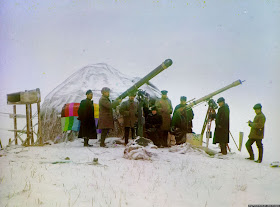 |
A young man from the Lyuli community in Uzbekistan's southern province of Surxondaryo.
Image: Aleksandr Barkovsky |
Managing editor of Global Voices, Filip Noubel, recently interviewed Uzbek conceptual artist Aleksandr Barkovsky about the time he spent with the Lyuli people.
More than 50 ethnic groups live in Uzbekistan. The Lyuli community lives on the margins of Uzbek society, often discriminated because of their ethnicity.
The Lyuli are believed to be distantly related to the Roma and Sinti people of Europe and the Middle East, but their origins are obscure. As such, there is currently little consensus on how to best describe this community in English.
In Russian, the most commonly used term is "цыгане" — usually translated into English as "Gypsies", which is widely considered derogatory and has largely been replaced by the word "Roma."
According to a 2019 study conducted by Uzbek researcher Kamilla Zakirova:
"Central Asia's [Roma] are usually called Lyuli. The Lyuli describe themselves using the term Mughat, an Iranian term meaning "fire cult followers," which is applied to Zoroastrians. They have inhabited the territories of Central Asia for centuries, ever since their ancestors migrated from the Punjab in present day Pakistan. There are no accurate contemporary data on the Lyuli population because it does not participate in the government conducted census and many members of the Lyuli population never obtain legal documents".
The interview is published with permission.
Filip Noubel: What is the main social issue the Lyuli face today?
Aleksandr Barkovsky: The issue of education. There is an unspoken consensus that education is unattainable and partially not needed. The reasons for this lie on both sides, as the Roma people maintain patriarchal traditions and thus the head of the clan, a man who concentrates all the authority, makes decisions not in favour of education but in favour of the rules established in the community. Most people think that as the Lyuli choose not to pursue education, giving them a chance to study and learn different skills is meaningless. Yet if one surveys the community, one can find many Lyuli who want to change their lives. Adults say that they want “a better life for their children,” and understand that the only way to achieve that is to get good quality education.
 |
Lyuli family in a Russian Orthodox cemetery in Tashkent at Easter, when it is tradition to eat near gravestones.
Image: Aleksandr Barkovsky |
FN: Does that mean Lyuli children really have no access to education?
AB: One of the biggest problems is the fact that Lyuli children are deprived of their childhood. Lyuli families have many children, but only half or even less survive. From the very first weeks of infancy, the mother takes her child downtown where she walks under the scorching sun or in the snow holding her kid in one hand and begging with the other. As a result, children absorb with their mother's milk an image of the world that dominated by begging, deprivation, humiliation, and constant beatings.
FN: What is the status of women in the community?
AB: Women do not have an equal status to men in Roma society. They do not have the same rights, but they have many obligations. They have to give birth to many children whether they want to or not —a large family is a way to gain respect among the community, and the first question [women] get is how many children they have. The only chance for female education is before marriage, and that is extremely rare. Particularly because marriages are held at a very young age; girls are married at the age of 14 or 15.
FN: Does religion play an important role in the life of the Lyuli Roma?
AB: The Lyuli Roma identify as Sunni Muslims. They observe prayers, as well as all the other religious requirements and celebrations. In lay Muslim society they face discrimination from Uzbeks and Tajiks, who do not consider them “real” Muslims because of pagan elements to their religious practices, their caste system, and worship of fire. The Lyuli community's understanding of Islam is more about a popular Islamic spiritualism combined with elements of the pre-Islamic past, which remain to this day in the lives of the Lyuli Roma.
 |
| A Lyuli couple in a tent camp outside Tashkent. Image: Aleksandr Barkovsky |
FN: What is the government's approach to the social issues faced by the community?
AB: The main reason why the Lyuli Roma lack social protection is the simple fact that nobody knows anything about them. Where do they live? How many of them are there? Whatever policy the government implements, it will have no effect. That's why in order to protect their constitutional rights, what's needed is transparency and more information.
Related posts:
Uzbek-Korean Connections
The Greek Community of Uzbekistan
Langston Hughes: An African American Writer in Central Asia in the 1930s














